#Dauntless Avenger
Photo
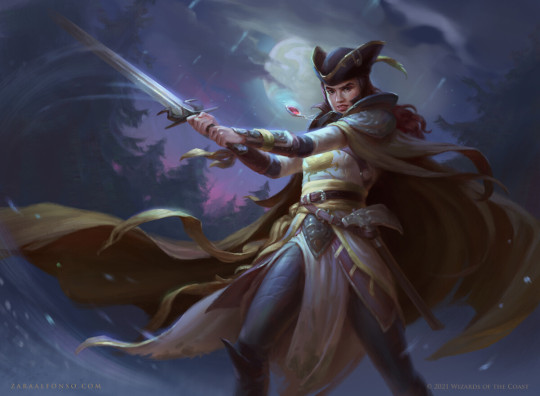
Dauntless Avenger (1 of 2) - Zara Alfonso
32 notes
·
View notes
Text
Marath, Will of the Wild tokens, part 5
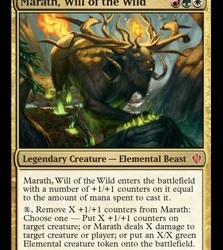
Soldiers, 1/1s
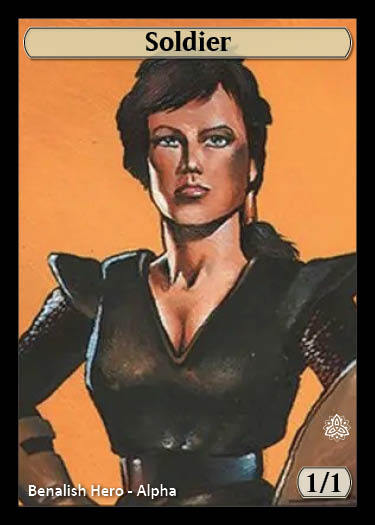
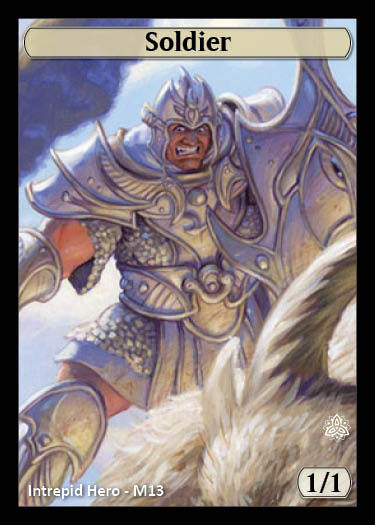
Soldiers, 2/2s
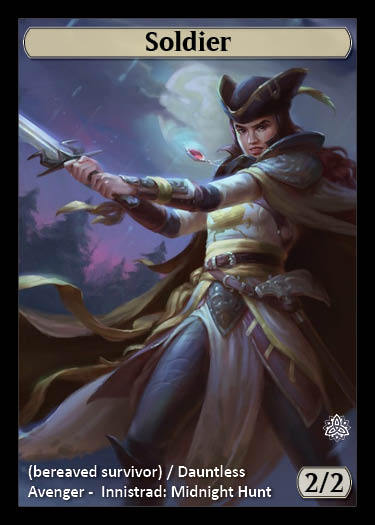
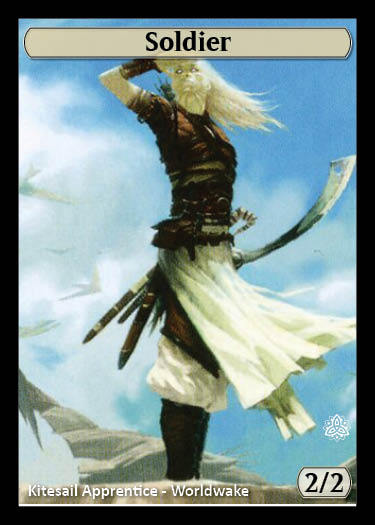
Soldiers with lifelink
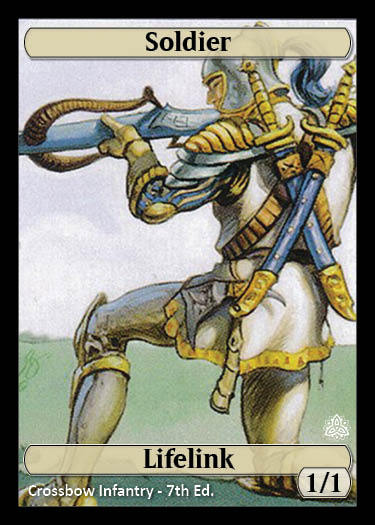
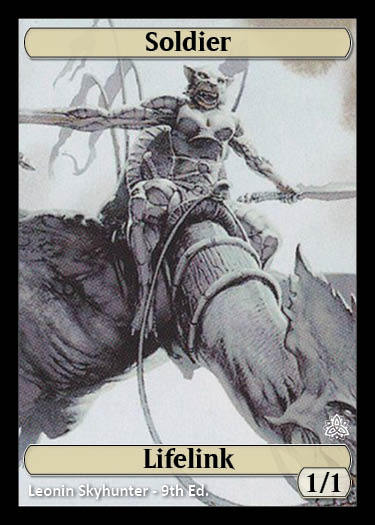
And spirits

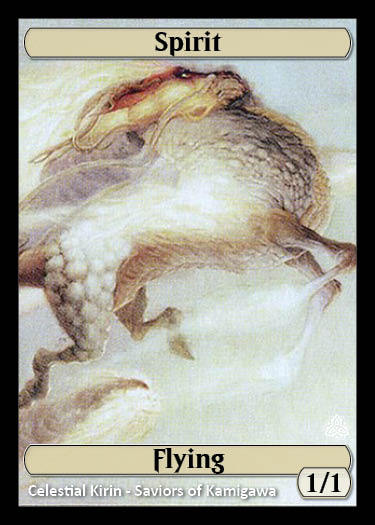

#magic: the gathering#magic the gathering#mtg#tokens#marath#soldiers#spirits#benalish hero#intrepid hero#dauntless avenger#kitesail apprentice#crossbow infantry#leonin skyhunter#belfry spirit#celestial kirin#moonlight geist
2 notes
·
View notes
Photo
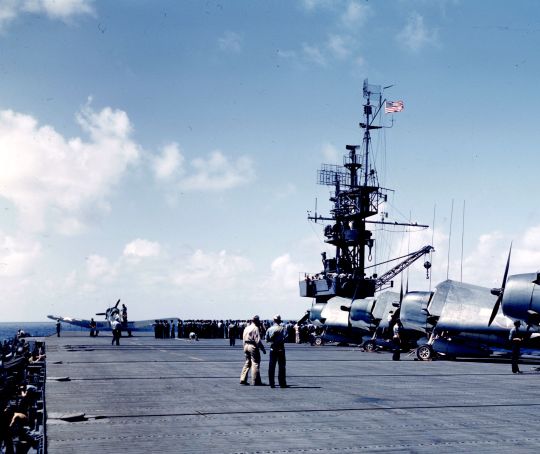
TBMs, F6Fs, and an SBD on the deck of USS Cowpens (CVL-25) during her working up exercises, summer 1943
80 notes
·
View notes
Photo

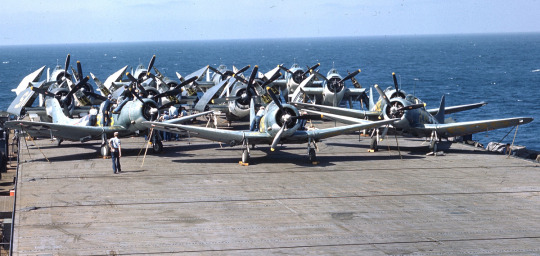
Original Caption: "Flight deck crews. US Navy training film MN-1673A. "Launching Aircraft." SBDs [Dauntless], F6Fs [Hellcat], TBFs [Avenger] re-spotted ready for take-off at Fly 3. Two-way tiedowns on wings and tail. Wheels chocked." 1/6/1943.
Record Group 80: General Records of the Department of the Navy
Series: Color Photographs of U.S. Navy Activities
Image description: The flight deck of an aircraft carrier, with about a dozen propeller airplanes on one end. The airplanes are secured to the deck with ties, and their wheels are chocked. A few groups of sailors give the viewer a sense of scale. In the background we see the wake of the ship, the blue ocean, and the sky. In the foreground is a large amount of bare flight deck.
Image description: Zoomed-in portion of the photograph, focused on the aircraft.
#archivesgov#January 6#1943#1940s#World War II#WWII#airplanes#aircraft#aircraft carrier#U.S. Navy#USN#Dauntless#Hellcat#Avenger
123 notes
·
View notes
Text
Graphic Policy’s Top Comic Picks this Week!
Graphic Policy’s Top Comic Picks this Week! 10 comics and graphic novels to check out this week! #comics #comicbooks #graphicnovel
Wednesdays (and Tuesdays) are new comic book day! Each week hundreds of comics are released, and that can be pretty daunting to go over and choose what to buy. That’s where we come in
Each week our contributors choose what they can’t wait to read this week or just sounds interesting. In other words, this is what we’re looking forward to and think you should be taking a look at!
Find out what…

View On WordPress
#avengers inc.#batman/superman: worlds finest#comic books#Comics#dark horse#Dark Horse Comics#dauntless dames#dc comics#fantagraphics#featured#green lantern: war journal#image comics#justice league vs. godzilla vs. kong#local man#marvel#oni press#sensational she-hulk#subgenre#ten speed press#the man from maybe#watership down
1 note
·
View note
Text
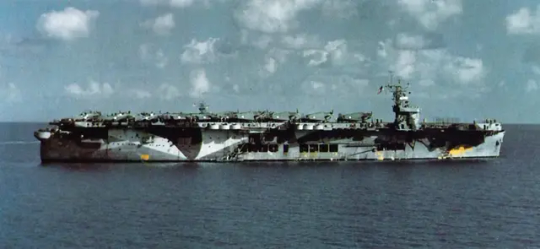
Escort carrier USS Santee in Oct 1942, probably in Bermuda, preparing to cross the Atlantic for the Operation Torch landings in North Africa. Note SBD Dauntless, F4F Wildcat, and TBF Avenger aircraft on the flight deck
26 notes
·
View notes
Text
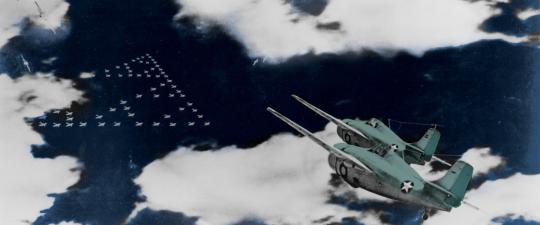
Marine Air’s Dark Day at Midway
Marine Aircraft Group 22’s experience at the Battle of Midway serves as a hard lesson in trying to do too much with too little.
The 4th of June 1942 was a very bad day for Marine Corps aviation. At the Battle of Midway, Marine Aircraft Group (MAG) 22 suffered terrible losses and contributed little to the U.S. Pacific Fleet’s spectacular victory that day. The group’s fighting squadron, VMF-221, lost far more aircraft than its pilots shot down. Its dive-bomber squadron, VMSB-241, suffered staggering losses without hitting a single Japanese ship.
Midway historians have thoroughly chronicled the actions of these two squadrons and touched on some reasons for their performance. The most cited causes are the obsolescence of Marine aircraft and the inexperience of Marine aviators.1 A closer examination of archival material reveals additional factors that impaired the group’s performance at Midway and new insights into why MAG-22 sent such green pilots into battle.
The heart of MAG-22’s troubles lay in its two competing missions: While forward deployed to defend an advanced base, the group also served as a de facto training command for new aviators. This alone would have undermined its combat readiness. But additional factors worked against MAG-22. In the weeks before the battle, the flight hours the group devoted to training were limited by its responsibilities to defend Midway Atoll and by logistical shortfalls. During the battle, Naval Air Station Midway and MAG-22 were unable to coordinate aircraft from three services based at the atoll. Finally, imprecise direction from Pacific Fleet commander Admiral Chester W. Nimitz led to misunderstandings of how MAG-22 would employ its fighting squadron.
Present-day naval commanders are acutely familiar with the challenge of balancing combat readiness and forward presence. As naval leaders look for ways to maintain Navy and Marine Corps forces in the western Pacific and prepare for possible conflict there, the experience of MAG-22 at Midway provides a sobering reminder of the risks of attempting to do too much with too little.

At Midway, First Lieutenant Daniel Iverson stands on a wing of his shot-up SBD-2 Dauntless, one of MAG-22’s 46 aircraft losses in the Battle of Midway. Later repaired in the United States, the restored SBD is now an exhibit at the National Naval Aviation Museum in Pensacola, Florida.
At Midway, First Lieutenant Daniel Iverson stands on a wing of his shot-up SBD-2 Dauntless, one of MAG-22’s 46 aircraft losses in the Battle of Midway. Later repaired in the United States, the restored SBD is now an exhibit at the National Naval Aviation Museum in Pensacola, Florida. National Naval Aviation Museum
MAG-22’s Very Bad Day
At 0555 on 4 June 1942, Midway’s radar detected a large formation of aircraft 93 miles northwest of the atoll. MAG-22’s siren wailed. In accordance with orders issued the previous evening by Lieutenant Colonel Ira L. Kimes, the commander of MAG-22, VMF-221 launched its aircraft immediately. A detachment of six Navy TBF Avengers took off next, followed by four Army Air Forces B-26 Marauders armed with torpedoes. The TBFs and B-26s proceeded independently to attack the Japanese carriers. The 16 SBD-2 Dauntlesses and 12 SB2U-3 Vindicators of VMSB-241 took off last and rendezvoused about 20 miles east of Midway’s Eastern Island.2
VMF-221’s commanding officer, Major Floyd B. Parks, had organized his 21 F2A-3 Buffalos and seven F4F-3 Wildcats into four divisions of Buffalos and one of Wildcats. All but one F2A-3 and one F4F-3 were mission ready and got airborne, though the divisions became slightly disorganized during the hasty scramble. The Japanese strike consisted of 108 aircraft—36 Aichi D3A “Val” dive bombers, 36 Nakajima B5N2 “Kate” carrier attack aircraft, and 36 Mitsubishi A6M2 “Zeke,” or Zero, fighters. In accordance with Kimes’ plan, MAG-22’s fighter direction center funneled all five of VMF-221’s divisions to intercept the incoming strike. The Marines had the altitude advantage, and the separate divisions launched a series of overhead gunnery passes against the Japanese bomber formations. As the slower Marine aircraft recovered for additional passes, the nimbler Zeros overtook them and sent one after another tumbling downward.3
There is little doubt VMF-221 got the worst of the fight. The Japanese shot down 15 Marine fighters and severely damaged another nine, leaving just one F2A-3 and one F4F-3 ready to fly. Though Kimes afterward estimated Japanese losses at 43 aircraft, his surviving pilots definitively claimed just nine victories. Kimes’ estimate included “probable victories by missing fighter pilots” as well as claims by rear-seat gunners of VMSB-241.4 The actual total was far lower. VMF-221 probably shot down just three aircraft outright. Another 16 Japanese aircraft survived the raid but either ditched or were so irreparably damaged they could not fly again.5
A PBY Catalina flying boat had spotted the Japanese carriers, and MAG-22 passed their location to VMSB-241.6 Major Lofton R. Henderson, the squadron commander, led the SBDs. Major Benjamin W. Norris, the executive officer, led the SB2Us. While Henderson took his unit to 9,000 feet, Norris climbed to 13,000 feet.7 On paper, the SB2U-3s were nearly as fast as the SBD-2s, but the two flights proceeded independently.8
Because the Marine dive bombers were slower than the TBFs and B-26s, had taken off last, and had flown east before heading northwest, VMSB-241 did not attack until a half hour after the TBF and B-26 attacks had ended. The Japanese combat air patrol had shot down five of the six Avengers and two of the four Marauders; none had scored a hit. When Henderson and his SBDs spotted the carrier Hiryū at about 0755, the Japanese combat air patrol still had 13 fighters aloft.9
Henderson conducted a glide-bombing attack. A dive-bombing attack would have facilitated bombing accuracy and complicated fighter gunnery and antiaircraft solutions. But more than half of Henderson’s pilots were too inexperienced to attempt the technique, and the cloud cover would have made dive bombing particularly difficult.10
The combat air patrol’s Zeros attacked Henderson first. On their second pass, they sent him down in flames. The remaining SBDs continued the gliding attack. One by one, the Marines released their bombs—and missed. Some came petrifyingly close for the Hiryū’s crew, and many Marines mistakenly believed they had scored hits.11
Norris and his Vindicators arrived at about 0820, less than ten minutes after the surviving SBD-2s had departed and amid an attack by Army Air Forces B-17 Flying Fortresses. The combat air patrol had doubled to 26 fighters. Norris descended through the clouds toward the carrier Akagi. The Zeros could not find the dive bombers as long as they were in the safety of the cloud bank, but neither could the Marines see the ships below. When they emerged at 2,000 feet, they saw only the battleship Haruna. Norris also attempted a gliding attack. The Haruna maneuvered evasively, neatly avoiding every one of the Marines’ bombs. The SB2Us hugged the surface and flew back to Midway.12 Only 8 of VMSB-241’s 16 SBD-2s and 8 of its 12 SB2U-3s returned.13
VMSB-241 conducted two more strikes during the battle. That evening Norris led five SB2U-3s and six SBD-2s in a vain search for burning carriers. They found nothing, and Norris did not return, lost in the inky, moonless squalls. On 5 June, VMSB-241 attacked the cruisers Mogami and Mikuma. The squadron lost another Vindicator to antiaircraft fire and again scored no hits.14
What Was Done Well
MAG-22 did some things remarkably well in its first action. Due to superb intelligence and early warning, no airworthy planes were caught on the ground. The fighter direction center placed the fighters in an optimum intercept position. The dive bombers located the Japanese carriers. Most impressively, every fighter and dive-bomber pilot attacked without hesitation into the teeth of a formidable defense.
MAG-22’s efforts indirectly contributed to the destruction of the Akagi and two other carriers, the Kaga and Sōryū, later that morning. As historians Jonathan Parshall and Anthony Tully demonstrated, the cumulative effect of the series of failed attacks by bombers from Midway and U.S. carriers created conditions that delayed Admiral Chūichi Nagumo’s counterattack and placed his carriers at greater vulnerability to the dive bombers from the USS Enterprise (CV-6) and Yorktown (CV-5). Dodging the attacks required the carriers to maneuver violently. Defending against them required the carriers to launch and recover fighters. Perhaps just as important, Nagumo faced a series of menacing dilemmas, complicating his decision-making. When the dive bombers from the Enterprise and Yorktown appeared overhead at 1020, Kates and Vals were still below on the hangar decks, where their fuel and ordnance amplified the destructive power of the American bombs.15
VMF-221 also helped reduce the strength of Nagumo’s counterpunch when it did come. The only carrier that survived the Enterprise and Yorktown dive-bomber attacks was the Hiryū. It was her air group that VMF-221 had attacked. Though the Marine fighters shot down just two Kates outright, another seven Kates were shot down by Marine antiaircraft guns, ditched, or were too damaged to participate in the strikes against the U.S. carriers.16 In other words, the Marines did not bring down many aircraft, but the ones they did bring down were the right ones—aircraft from the Hiryū’s air group.
Nonetheless, 4 June had been an awful day for MAG-22. It had lost many aircraft, shot down only a handful of the enemy, and hit no ships. Forty-two MAG-22 Marines had died; 36 pilots and gunners were missing; and six Marines had been killed in the bombing of Eastern Island.17
‘Not a Combat Airplane’
On 17 April, Major (soon to be Lieutenant Colonel) Ira L. Kimes (below) landed at Midway Atoll to replace Lieutenant Colonel William Wallace as MAG-22 commander. Accompanying Kimes were six second lieutenants, green aviators who replaced six captains, seasoned fliers, who left the atoll with Wallace three days later. Public Domain
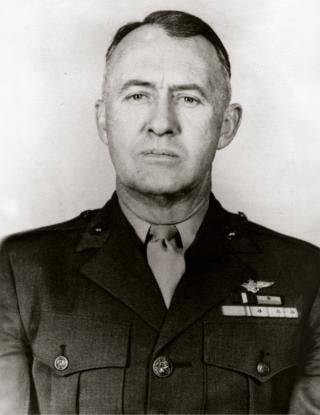
Every surviving Marine fighter pilot from VMF-221 attested to the superiority of the Zero over the Marine fighters. Captain
The F2A-3 is not a combat airplane. It is inferior to the planes we were fighting in every respect.
It is my belief that any commander that orders pilots out for combat in a F2A-3 should consider the pilot as lost before leaving the ground.18
Kimes agreed. In his endorsement to his aviator’s statements, Kimes recommended that the fleet relegate the F2A-3 Buffalo, the F4F-3 Wildcat, and the SB2U-3 Vindicator to training commands.19
The Vindicator was indeed past its usefulness. However, there is evidence that neither fighter was to blame for VMF-221’s poor performance. With improved tactics, Marine and Navy pilots would achieve far better results with the F4F in the Solomons. Captain Marion Carl, the only Marine to shoot down a Zero over Midway, believed the F2A-3 was as maneuverable and fast as the F4F-3, and its only drawbacks were that it could not absorb punishment and was less stable as a gunnery platform than the Wildcat.20
Some British and Dutch Buffalo aces, whose squadrons suffered grievously against Imperial Japanese Navy Zeros, attributed their lopsided outcome to Japanese proficiency and numbers rather than the Buffalo’s inferiority. Finnish Buffalo pilots enjoyed great success flying the planes against the Soviets.21 The Buffalo’s mixed performance in other theaters suggests that other factors contributed to VMF-221’s poor performance.
‘Half-Baked Flyers’
When VMF-221 and VMSB-241 had landed on Eastern Island in December 1941, both squadrons were top heavy with experience. VMF-221’s most junior pilot had been flying for at least a year since flight school.22 But the 57 aviators who flew on 4 June included 35 second lieutenants, none of whom had been with their squadron more than four months, and 17 of whom had arrived on 27 May directly from flight school.23
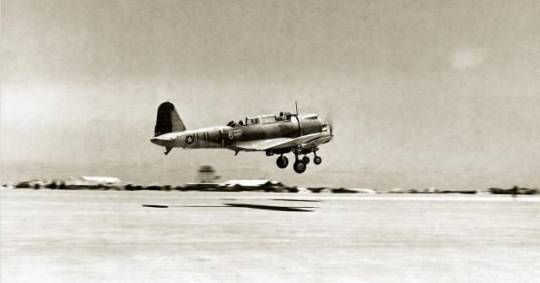
SB2U-3 Vindicator dive bombers take off from Midway’s Eastern Island in early June, possibly to attack Japanese carriers the morning of 4 June. While inferior aircraft—including Vindicators—were factors in MAG-22’s poor performance at Midway, tactics and training played key roles.
SB2U-3 Vindicator dive bombers take off from Midway’s Eastern Island in early June, possibly to attack Japanese carriers the morning of 4 June. While inferior aircraft—including Vindicators—were factors in MAG-22’s poor performance at Midway, tactics and training played key roles. U.S. Naval Institute Photo Archive
In the first half of 1942, Marine aviation had two conflicting missions: defending the fleet’s advanced bases and training new aviators. Newly winged aviators reported to the fleet with just 200 hours of flight time, and none in the aircraft they would fly in combat.24 The new aviators needed operational training, but the aircraft they needed to train in were defending advanced bases in the Pacific.
On 8 January 1942, Brigadier General Ross E. Rowell, the commander of 2d Marine Air Wing, described the dilemma in a letter to Vice Admiral William F. Halsey Jr., the commander of Aircraft, Battle Force, Pacific Fleet: “I have now accumulated 35 second lieutenants in various stages of advanced training. . . . If ComAirBatFor approves and you want some half-baked flyers, send me a dispatch to that effect.” Halsey approved; he directed Rowell to order the green fliers to squadrons like VMF-221 and VMSB-241.25 This decision set in motion a sequence of personnel transfers that diluted the combat readiness of forward-deployed squadrons. As inexperienced aviators joined squadrons at advanced bases, experienced aviators left to form new squadrons in Hawaii and California.
Marine aviation was still following its prewar training pipeline. Once students were designated naval aviators, they reported to squadrons in the Fleet Marine Force for about a year of operational flight training in combat aircraft.26
Not only did MAG-22 not have a year to train its new aviators, but the group’s commitment to the defense of Midway also required it to devote most of its operational flights to patrols and radar calibration vice gunnery and tactics. Less than 30 percent of VMF-221’s missions from December 1941 to May 1942 were dedicated to improving the lethality of its fighter pilots.27
Logistics shortfalls further impinged on the group’s training. A shortage of .50-caliber machine-gun ammunition often limited gunnery practice to dummy runs.28 In the final week before combat, PBY Catalinas and B-17 Flying Fortresses drew thirstily from Midway’s fuel stocks, which were already limited due to an incredible blunder. On 22 May, demolition charges placed at an underground fuel storage facility detonated when one of the defense battalion batteries fired its 11-inch guns. The station lost 375,000 gallons of precious aviation fuel and its pipeline to Eastern Island.29 The resulting shortage prevented the group from providing the 17 Marines fresh out of flight school with anything more than familiarization flights. VMSB-241 could not even check out its new pilots in their SBDs.30
Without question, MAG-22 fought the Battle of Midway with inferior aircraft and many “half-baked” pilots. Though the odds were stacked against the group’s aviators, command decisions may have stacked the odds higher than they needed to be.
‘No Organized Plan Whatsoever’
In a 1966 interview, MAG-22’s former executive officer stated there had been “no organized plan whatsoever” to coordinate Midway’s Army Air Forces, Navy, and Marine aircraft.31 Though not strictly true, his characterization betrays how Naval Air Station Midway and MAG-22 struggled to coordinate air operations.
In anticipation of the coming fight, Nimitz had abundantly reinforced Midway. In addition to MAG-22, Midway’s air force included 31 PBYs, 17 B-17s, the 4 B-26s, and the 6 TBFs. Nimitz assigned tactical control of all these to the naval air station commander, Navy Captain Cyril T. Simard, and sent an experienced aviator and a naval base air defense detachment to coordinate air operations.32
While the naval air station directed scouting operations superbly, integrating the bombers in a coordinated strike proved beyond its reach. Each aircraft type attacked without regard to the next, permitting the Japanese the opportunity to fend off each in turn. As Kimes observed in perfect hindsight, “It would have been better had they arrived simultaneously.”33
Coordination was exacerbated by the physical separation of the naval air station and MAG-22 command posts. Simard and his air operations officer were on Sand Island; Kimes and his command post were on Eastern Island. According to Kimes’ executive officer, the “Marines ran their own show” but did not command the other services’ bombers on Eastern Island, including the six Navy TBFs.34
Kimes’ air group struggled to coordinate its own aircraft. VMSB-241 does not seem to have attempted to integrate its SBD and SB2U attacks. Most puzzlingly, MAG-22 allocated no fighter protection to VMSB-241 for its strike against the Japanese carriers.
‘Go All Out for the Carriers’

Kimes employed his fighting squadron in what Marine Corps doctrine termed “general support.” As then–Major William J. Wallace lectured Marine officers at Quantico in 1941, general support was an offensive mission that allowed fighters the freedom to be “on the prowl.” In contrast, missions that tied fighters to protection missions, such as escorting bombers, were termed “special support.” As a fighter pilot, Wallace clearly favored the freedom to go find trouble and emphasized, “The rule, then, for the employment of fighter units should be-—general support wherever and whenever possible.”35
In January 1942, now–Lieutenant Colonel Wallace took command of Marine aviation on Midway, which he retained until relieved by Kimes in April. It was Wallace who had developed the fighter direction system MAG-22 employed for defense of the atoll. As Wallace’s views on fighter employment reflected Marine Corps doctrine, and Wallace commanded MAG-22 until two months before the battle, this bias likely influenced Kimes’ decision to place all of VMF-221 in general support on 4 June.
MAG-22’s fighter employment stands in stark contrast to how Japanese and U.S. carrier task forces operated on 4 June. Carriers were far more vulnerable to air attack than an island base. Nonetheless, every Japanese and American task force commander allocated fighter escorts to increase their bombers’ chances of getting through the enemy’s fighters.
Hitting the Japanese fleet was exactly what Nimitz had in mind when he reinforced Midway with so many aircraft. On 20 May, Nimitz provided the Chief of Naval Operations and Commander-in-Chief of the U.S. Fleet, Admiral Ernest J. King, with some views on the role of land-based aircraft he had drawn from the recent Battle of the Coral Sea:
The shore commander should assign attack missions designed to render the greatest possible assistance to the Fleet Task Force when it is engaged and should particularly be ready to provide fighter protection when it is practicable.36
Nimitz incorporated these views in his planning guidance for Midway. In a 23 May memorandum to his chief of staff, Captain Milo F. Draemel, Nimitz explicitly directed that “Midway planes must thus make the CV’s [aircraft carriers] their objective, rather than attempting any local defense of the atoll.”37 In an undated memorandum likely written about the same time, Nimitz reiterated his intent to Captain Arthur C. Davis, his air officer:
Balsa’s [Midway’s] air force must be employed to inflict prompt and early damage to Jap carrier flight decks if recurring attacks are to be stopped. Our objectives will be first—their flight decks rather than attempting to fight off the initial attacks on Balsa. . . . If this is correct, Balsa air force . . . should go all out for the carriers . . . leaving to Balsa’s guns the first defense of the field.38
But in his operations order for Midway, Nimitz was less clear in the tasks he assigned to Simard at Midway:
(1) Hold MIDWAY.
(2) Aircraft obtain and report early information of enemy advance by searches to maximum practicable radius from MIDWAY covering daily the greatest arc possible with the number of planes available between true bearings from MIDWAY clockwise two hundred degrees dash twenty degrees. Inflict maximum damage on enemy, particularly carriers, battleships, and transports.
(3) Take every precaution against being destroyed on the ground or water. Long range aircraft retire to OAHU when necessary to avoid such destruction. Patrol planes fuel from AVD [seaplane tender] at French Frigate Shoals if necessary.
(4) Patrol craft patrol approaches; exploit favorable opportunities to attack carriers, battleships, transports, and auxiliaries. Observe KURE and PEARL and HERMES REEF. Give prompt warning of approaching enemy forces.
(5) Keep Commander-in-Chief, U.S. Pacific Fleet and Commander Hawaiian Sea Frontier fully informed of air searches and other air operations; also the weather encountered by search planes.39
The very explicit language Nimitz used in his planning guidance—that Midway’s aircraft “should go all out for the carriers”—is not reflected in his order. Absent such direction, Simard left it to Kimes to command the Marine squadrons as he saw fit. In accordance with Marine Corps doctrine, Kimes placed his fighting squadron in general support over Midway—and sent his dive bombers against the Japanese fleet without fighter escorts. Had he allocated one or two divisions from VMF-221 to escort VMSB-241, more Marine dive bombers may have survived to drop bombs on the Hiryū, and their accuracy may have improved had they attacked with less interference from the Japanese combat air patrol.
Trying to Do More with Less

MAG-22 had not gone all out for the carriers but had massed its fighters in defense of Midway. Naval Air Station Midway had struck the Japanese carriers with every bomber available but had been unable to coordinate their attacks to increase their chances for success and survival. Most tragically, many of the Marines lost in the battle were just not ready to fight the Imperial Japanese Navy, despite their willingness and eagerness to try.
MAG-22’s very bad day is a cautionary tale. Trying to do more with less—in MAG-22’s case, trying to defend Midway while training novice aviators—carries risks that may be hidden until they are exposed through combat. In his report of the battle, Kimes included a page and a half of candid comments and recommendations.40 After Midway, Marine aviators applied the lessons MAG-22 had learned at enormous cost and achieved spectacular results against the same foe in the Solomons, often under the leadership of aviators who had survived Midway.
Those same lessons are noteworthy today. Naval experts have cautioned the naval services against maintaining too much forward presence with too little fleet.41 An enduring lesson of MAG-22 may be that very bad days result from very bad choices, and that choosing to do more with less is often a very bad choice.
7 notes
·
View notes
Note
Holy crap can I ask to see the list of all the requests you got?! It has to be a lot if you’re booked all the way to July
oh you already know! here goes:
4/25: so, before you go chapter two (the darkling x child of hecate!reader series)
4/27: harry hook x reader (based on 'the way i loved you'' by taylor swift, was literally giggling to myself over how fun this one's going to be)
4/29: so, before you go chapter three (the darkling x child of hecate!reader series)
5/1: thomas x reader (set in the safe haven, newt and teresa are alive, culmination of months of mutual pining)
5/3: so, before you go chapter four (the darkling x child of hecate!reader series)
5/5: luke patterson reader (reader is luke's english tutor)
5/7: so, before you go chapter five (the darkling x child of hecate!reader series)
5/9: charles leclerc x reader (reader is in charge of social media and charles flirts at all hours of the day)
5/11: so, before you go chapter six (the darkling x child of hecate!reader)
5/13: peeta mellark x reader (reader is a friend of katniss, takes place after round 1 of the games)
5/15: so, before you go chapter seven (the darkling x child of hecate!reader)
5/17: loki x reader (reader is an empath, loki is newly forced to join the avengers)
5/19: so, before you go chapter eight (the darkling x child of hecate!reader)
5/21: leonard 'bones' mccoy x reader (star trek x grishaverse au, the thoughts and ideas i have for this >>>>)
5/23: matthias helvar x reader (enemies to friends to lovers)
5/25: charles leclerc x reader (reader is head of pr for ferrari, when ferrari strategy does ferrari strategy she helps charles w the media)
5/27: andrew peter parker x reader (simple headcanons)
5/29: clove x reader (reader is clove's bff and helping her train for the games but gets scared the closer they get to the day of the reaping)
5/31: tom peter parker x reader (male reader is fighting in wakanda during infinity war, they're worried about each other through the blip)
6/1: billy rocks x reader (the magnificent seven but a grishaverse au, i am so so excited to write this, june cannot come quickly enough)
6/3: tewkesbury x reader (both of them are lovesick idiots)
6/5: han solo x reader (escapades w han + singing to get out of a crisis)
6/7: race x reader (reader is brooklyn's second in command)
6/9: peter pevensie x reader (reader is a knight with a gay crisis, i am shrieking, raven i love you for sending this in)
6/11: jack wilder x reader (reader is a paramedic and jack keeps mildly injuring himself so she can fix him up)
6/13: newt x reader (gally's trademarked beverage as a plot device)
6/15: peter pevensie x reader (headcanons for having to live in london after spending so long in narnia)
6/17: finch x reader (the newsies are hanging out, he has a crush)
6/19: daniel atlas x reader (reader volunteers to be a part of a trick, he gets shy)
6/21: newt x reader (tmr modern au, they sit next to each other in class)
6/23: race higgins x reader (race + reader are on a date but get jumped and they must recover emotionally from that)
6/25: kai parker x reader (kai redemption era)
6/27: lucy pevensie x reader (lucy has a girlfriend and gets up the courage to introduce them to the siblings, this is when they're all kings and queens)
6/29: zoya nazyalensky x reader (reader is zoya's #1 fan bc zoya saved them from attack one time, reader is hurt by somebody and zoya nearly becomes a supervillain bc of it)
7/1: andrew peter parker x reader (male reader is peter's best friend but when peter gets bitten by the spider, he stops hanging out with reader as much, angst ensues)
plus bonus non requests that i get to tack onto the end of my queue bc i am the author and i need to clear through some of my unwritten ideas:
7/3: eric coulter x reader (reader was from amity but now tattoos, idk commentary on art surviving in a place like dauntless you get my drift)
7/5: jesper fahey x reader (this quote specifically that has been in my inbox for months: but how long? how long until i blend into the background and i'm no longer unusual? what will you do when i'm no longer a bet that calls your interest or a gamble worth the odds?)
7/7: eowyn x reader (eowyn thinks she dislikes reader bc reader is a girl and can fight but eowyn can't, in reality that's not jealousy but a repressed crush on a girl, we've all had them before)
7/9: peter pan x reader (reader can visit neverland when she's dreaming, she goes there often enough that she wants to live there forever, she asks peter to take her but he hesitates, she decides to never dream of him again, eventually he shows up in person bc he misses her)
32 notes
·
View notes
Text
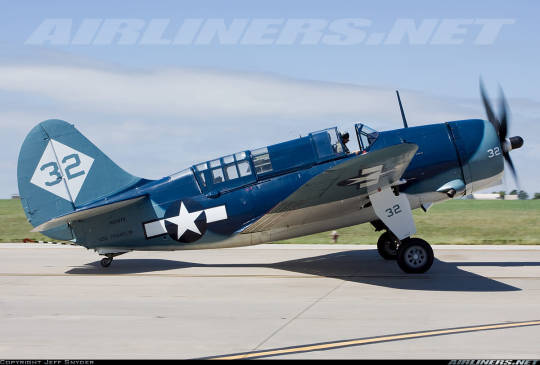
Curtiss SB2C-5 Helldiver
The Helldiver was developed to replace the Douglas SBD Dauntless. It was a much larger aircraft, able to operate from the latest aircraft carriers and carry a considerable array of armament. It featured an internal bomb bay that reduced drag when carrying heavy ordnance. Saddled with demanding requirements set forth by both the U.S. Marines and United States Army Air Forces, the manufacturer incorporated features of a "multi-role" aircraft into the design.
The Model XSB2C-1 prototype initially suffered development issues connected to its Wright R-2600 Twin Cyclone engine and three-bladed propeller; further concerns included structural weaknesses, poor handling, directional instability, and bad stall characteristics. In 1939, a student took a model of the new Curtiss XSB2C-1 to the MIT wind tunnel. Professor of Aeronautical Engineering Otto C. Koppen was quoted as saying, "if they build more than one of these, they are crazy". He was referring to controllability issues with the small vertical tail.
The first prototype made its maiden flight on 18 December 1940. It crashed on 8 February 1941 when its engine failed on approach, but Curtiss was asked to rebuild it. The fuselage was lengthened and a larger tail was fitted, while an autopilot was fitted to help the poor stability. The revised prototype flew again on 20 October 1941, but was destroyed when its wing failed during diving tests on 21 December 1941.
Large-scale production had already been ordered on 29 November 1940, but a large number of modifications were specified for the production model. Fin and rudder area were increased, fuel capacity was increased, self-sealing fuel tanks were added, and the fixed armament was doubled to four 0.50 in (12.7 mm) machine guns in the wings, compared with the prototype's two cowling guns. The SB2C-1 was built with larger fuel tanks, improving its range considerably.
The program suffered so many delays that the Grumman TBF Avenger entered service before the Helldiver, even though the Avenger had begun its development two years later. Nevertheless, production tempo accelerated with production at Columbus, Ohio and two Canadian factories: Fairchild Aircraft Ltd. (Canada), which produced 300 (under the designations XSBF-l, SBF-l, SBF-3, and SBF-4E), and Canadian Car and Foundry, which built 894 (designated SBW-l, SBW-3, SBW-4, SBW-4E, and SBW-5), these models being respectively equivalent to their Curtiss-built counterparts. A total of 7,140 SB2Cs and equivalent models were produced in World War II.
Initially poor handling characteristics and late modifications caused lengthy delays to production and deployment, to the extent that it was investigated by the Truman Committee, which turned in a scathing report. This contributed to the decline of Curtiss as a company. Neither pilots nor aircraft carrier skippers seemed to like it. Nevertheless, the type was faster than the Dauntless, and by the end of the Pacific War, the Helldiver had become the main dive bomber and attack aircraft on USN carriers.
By the time a land-based variant, known as the A-25 Shrike, became available in late 1943, the Western Allied air forces had abandoned dedicated dive-bombers. A majority of A-25s delivered to the US Army Air Forces were transferred to the US Marine Corps, which used the type only in one side campaign and non-combat roles. The British Royal Navy and the Royal Australian Air Force also cancelled substantial orders, retaining only a few aircraft for research purposes.
Nicknames for the aircraft included "Big-Tailed Beast" or just "Beast", "Two-Cee", and "Son-of-a-Bitch 2nd Class"; the latter nickname was derived from the name SB2C and the aircraft's reputation for having difficult handling characteristics.
Photo-Description:
Aircraft
Commemorative Air Force
Curtiss SB2C-5 Helldiver
Reg.: N92879
Code: 32
Location & Date
Wichita - McConnell AFB (IAB / KIAB)
Kansas, USA - September 25, 2010
Caption:
Photographer:
J Snyder (Oklahoma, USA)
17 notes
·
View notes
Note
Iman for the outfit designer prompt.
SWTOR Outfit Designer Meme
Gonna admit that I only just made her, posted those screenshots, and never picked her back up hahaha. She's only got one outfit.
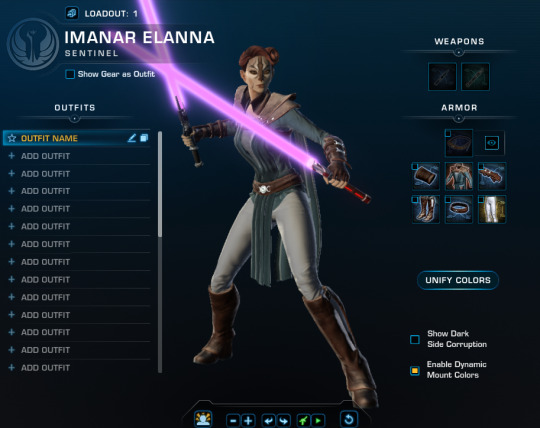
It's just the Force Apprentice set. No dyes or anything. I've gotta change that red lightsaber i dont??? know why she has that. The R Hand one is the Unrelenting Aggressor Lightsaber with a Pink Core color crystal. The L Hand saber is the Dauntless Avenger's Lightsaber, same color crystal.
And uhhh she likes the set because the blue is a nice contrast to her fur.
2 notes
·
View notes
Note
🪻ceilings - give me a few facts about yourself and I will ship you with a character, and give you a few headcanons about your relationship
intp-t, capricorn, panromantic, i am super short in height (around 4'11) and I really need to work on my laziness, I love wearing baggy clothes and Indian tradition clothes (such as a kurti), I am more mature for my age, I get insecure quite often, mentally unstable, anger issues, always confused, I cannot cook for my life's sake, I love wearing rings and necklaces but not with huge pendents, I do have spectacles, fav colour black and emerald green, loves mysteries, thrillers, murder mysteries, suspense, marvel, sports, I have a resting bitch face, i am an introvert but can socialise when necessary, idk how but I got candor (the honest), dauntless (the brave) and erudite (the intelligent) when I took the which faction you belong test (divergent series), slytherin (but I legit have traits of all houses and I hate snakes), sarcasm is basically my mother tongue, I do come off as rude when I am being sarcastic, straightforward, shy, i love to watch tom and jerry and takeshi's castle, fav authors: aagatha christie, james dashner, leigh bardugo, loves listening to music of any kind except country music, I listen to songs in hindi, korean and English, I love reading poems, I am learning korean, love the night sky, night walks, long drives, road trips, I am in between spontaneous and organised, my room is kept messy, I love enemies to lovers slow burn trope and fake dating trope, I often do think of what people will or do think of me
umm marvel, harry potter, dps and tmr (tbh I had to look up some traditional Indian clothing... but it is so stunning, I love it!)
Bucky Barnes
-Bucky was absolutely enamored by you. The way you can go from being sll dressed up, social, and polite with those around you, to being in your sweats, lounging on the couch, and making sarcastic jokes with others.
- When you two are out together... you look so intimidating with your rbf, it's not even funny. But the group knows how cute yall get. Bucky will cook for you while you sit near him and talk about everything.
- You get him into reading thrillers. If you ever get the chills from reading something super suspenseful, he is right there with you and reassuring you. Than you laugh it off because it is some stupid thing to get nervous about.
- Your straightforwardness caught him off guard at first. Bur then he finds it hilarious. When you are brutally honest about something with Sam or Steve for the first time and they just stop. He is nearby with that smirk on his face
- He loves taking late night walks with you.. or just sitting on the top of the Avengers tower looking up at the stars. Yall are so cute!
2 notes
·
View notes
Text
WW2 Fighter planes and Coca-Cola?!
Coca-Cola has done a lot of posters with American planes. Throughout their history, posters have been a significant means of mass communication, often with striking visual effect.
We digitally restored this absolutely fantastic collection of 18 rare art from 1943! Each is a full colour detailed illustration of various WW2 era US aircraft painted by “Heaslip.”
Each illustration has white/gold luster border and we have tried to digitally restore as close to the original as possible. At the bottom of each illustration is the Coca-Cola logo and a pair of bottles. At the bottom right are captions identifying the plane with statistics. The prints will be clear as possible from the 1943 prints.
Size is 30x40cms and you can choose to have it framed or not. These posters were framed and hung in bottling plant lobbies, schools, and other places. Students were instructed on the airplanes so that they knew the difference between friendly planes and enemy aircraft in preparation for bomb drills.
Vintage World War Two Coke posters of this type are some of the most desirable on the market today! These are getting harder and harder to find. So now MapTree gives you an opportunity to own these gems and create your own gallery to have a bourbon in your hands and wander back into those smoke filled skies of WW2!
DM to order these rare prints for owning or gifting or visit
All the 18 posters are READY to be ordered and owned or gifted!
Bell P-39 "Airacobra" U.S. Army - Pursuit
Brewster SB2A-1 "Buccaneer" U.S. Navy - Dive Bomber
Consolidated B-24 "Liberator" U.S. Army- Long Range Bomber
Consolidated PBY-5 "Catalina" U.S. Navy - Patrol Bomber
Curtiss SB2C-1 "Hell Diver" U.S. Navy- Dive Bomber
Douglas A-20 Boston
Douglas B-19 "Guardian of a Hemisphere" U.S. Army - Long Patrol Bomber
Grumman F4F-4 "Wildcat" U.S. Navy- Fighter
Waco Glider CG-4 U.S. Army- Troop Transport
Consolidated PB2Y-2 "Coronado" U.S. Navy - Patrol Bomber
Curtiss P-40-F "Warhawk" U.S. Army - Pursuit
Douglas SBD "Dauntless" U.S. Navy- Dive Bomber
Grumman TBF-1 "Avenger" U.S. Navy- Torpedo Bomber
Lockheed P-38 "Lightning" U.S. Army- Pursuit Interceptor
Martin B-26 "Marauder" U.S. Army - Medium Range Bomber
North American B-25 "Mitchell" U.S. Army-Medium Range Bomber
Vought-Sikorsky F4U-1 "Corsair" U.S. Navy- Fighter
Vultee Trainer- U.S. Army
6 notes
·
View notes
Text

NAME. Tisiphone
AGE & BIRTH DATE. 3000+ & Unknown
GENDER & PRONOUNS. Female & She/Her
SPECIES. Aspect
OCCUPATION. Enforcer
FACE CLAIM. Megan Fox
biography
( tw war, blood ) And in the beginning, there was blood. Blood had been the source of her very existence and strength. With Tiamat’s blood being the answer to her creation, Tisiphone entered this world ready for it. Screaming, wrathful and prepared, Tisiphone, along with her two sisters Alecto and Megara, fought the old Gods without hesitation. Nothing could stop them for all Tisiphone knew was war.
War, war, war, bloodshed in its entirety a necessary evil for the welfare of her divine Father Ulthar and the Elders. She crushed skulls underneath her feet, forced Gods onto their knees as the avenger of murder, that’s how they named her - Tisiphone. She gladly struck Gods down with her might, never once questioning the actual reason for it. To Tisiphone the world presented itself in black and white terms, allies and enemies with nothing in between. In a world of war, Tisiphone clung to her siblings and covered both their left and right flanks, completing the iconic trio, the Erinyes.
The executioner, the one to carry out vengeance and punishments, Tisiphone performed her duties without any love nor guilt. Devotion, love for her sisters, yes, but her own pleasures remained within the confines of war, of blood and hearing her enemies scream for mercy. And when the Old Gods had been defeated, Tisiphone could only wait. Waiting for a misstep, disobedience, was easier said than done, but humanity didn’t disappoint. She’d expected as much. It had been just a matter of time until they’d eat the fruit of the Gods and receive free will, going against the wishes of Ulthar. She answered disobedience with justified cruelty, once again wetting her hands with the blood of those at her mercy. Alas, yet again peace wouldn’t last, forcing Tisiphone into action.
Lucifer, her sibling, refused to follow Ulthar’s command any longer, which ultimately confused her. To go against Ulthar was to choose a fate worse than death. Their betrayal hurt, forcing Tisiphone to feel hurt, possibly for the first time in her existence. To be confronted with her own ability to feel ultimately bothered her. Rage and vengeance weren’t things she ever had to dial down or channel. They’d come so natural to her, without even thinking, but this? Fear followed as she thought about the possibility of her sisters choosing Lucifer over her. The Executioner, how good could you be for them, anyway? Death followed her wherever she went while Ulthar’s hands remained dry and spotless. She’d have to be the one to fight her own siblings if needed - so she blindly accepted her new fate, sealing away her own emotions – everything, but rage. The damage was done. Punishing her siblings brought her nothing but joy, an emotion she could barely hide. Their own rebellion had done nothing but further Tisiphone’s affinity for war and bloodshed, to aid Ulthar in keeping peace and order.
To guard the gates of the city of Dis, Tisiphone and her sisters descended beneath the fifth circle. It didn’t take long for the Seraphim-blooded to be corrupted. The inferno, Sathanas’ presence and them whispering into her ear ultimately uncovered what had been hidden for so long: the beast, the Executioner ready to strike her foes down once again.
She entered this world not knowing what to expect. Vengeance followed everywhere she went, forcing supernatural creatures into getting confronted with their wrongdoings, unable to ignore its presence. Peace had always been the answer, her peace, Ulthar’s peace. It’s only a matter of time until her corruption fully takes over. She’s the enforcer, the executioner, an Aspect tasked with bringing justice into this world - No, punishment, vengeance and bloodshed.
personality
+ vehement, dauntless, pragmatic
– destructive, corrupt, sadistic
played by saskia. gmt. she/her.
1 note
·
View note
Text
Remember the Battle of Midway: June 1942.

Midway was a catastrophic defeat from which the Imperial Japanese Navy never fully recovered. Much of the credit goes to the codebreakers who revealed the Japanese plan to ambush U.S. forces in time for the Allies to plan a counter-ambush. The Japanese plan to split American forces also failed.
The U.S. then launched a major air assault on the Japanese carriers. The TBF Avenger torpedo bombers were intercepted by Japanese Zeroes and decimated, but the SBD Dauntless dive bombers attacking afterward got through. They arrived just as the Japanese planes were refueling and rearming on deck. Three of four Japanese carriers were destroyed, tilting the course of the war against Japan.
youtube
#second world war#imperial japanese army#Imperial Japanese Navy#U.S. forces#the allies#torpedo bombers#year 1942#air assault#Battle of Midway#Youtube
1 note
·
View note
Photo
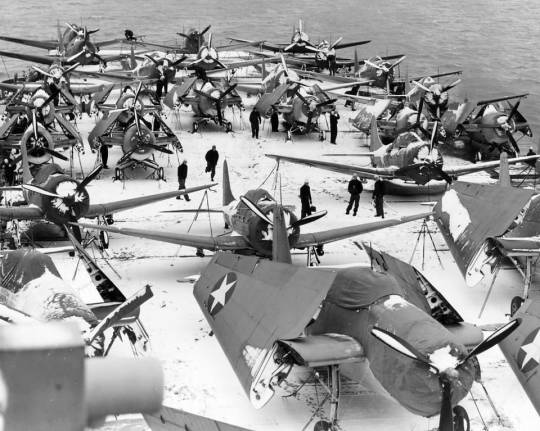
U.S. Navy Grumman F4F-4 Wildcats, Grumman TBF-1 Avengers & Douglas SBD-5 Dauntless on the snow covered flight deck of aircraft carrier USS Ranger (CV-4) during operations in the North Atlantic, 29 June 1943
22 notes
·
View notes
Video
Snow by Willard Womack
Via Flickr:
Avengers, SBD Dauntless, and Hellcats in the snow.
8 notes
·
View notes